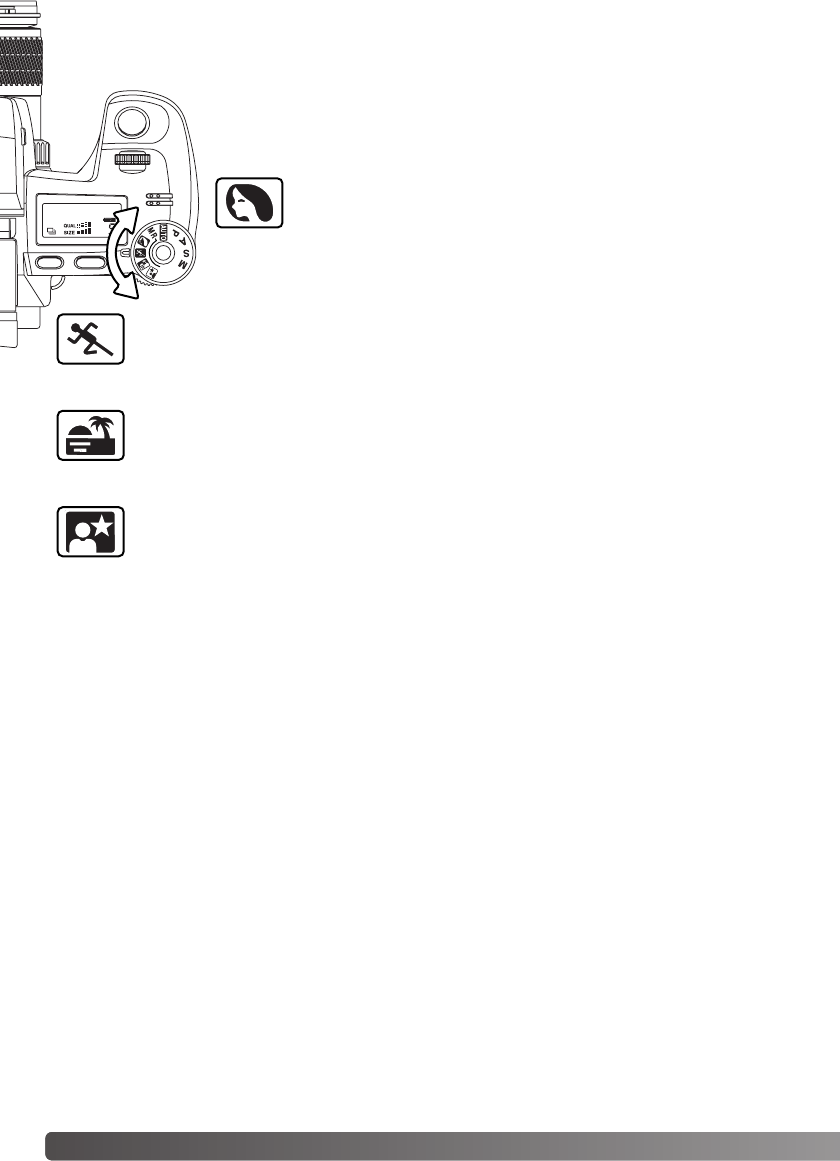
58
A
DVANCED RECORDING
DIGITAL-SUBJECT-PROGRAMS
Digital subject programs optimize the camera’s exposure, white-balance, and
image-processing systems for specific conditions and subjects. Simply turn the
exposure mode dial to select the appropriate subject program.
Sports action - used to capture fast action by maximizing shutter speeds. When using a
flash, make sure the subject is within the flash range (p. 75).The flash range can be
extended by changing the camera sensitivity (p. 74). A monopod is more flexible and com-
pact than a tripod when shooting events.
Sunset - optimized to reproduce rich, warm sunsets.When the sun is above the horizon,
do not point the camera toward the sun for prolonged periods of time.The intensity of the
sun could damage the CCD. Between exposures, turn off the camera or cover the lens.
Night portrait - for deep, subtle night scenes.When used with flash, the subject and
background exposures are balanced. Use a tripod to eliminate blurring from camera
shake. The flash can only be used with close subjects such as with a portrait of a person.
When using the flash, ask your subjects not to move after the burst; the shutter will still be
open for the background exposure.
Not all recording functions, such as the metering mode, can be changed when using Digital Subject
Programs.
Portrait - optimized to reproduce warm, soft skin tones and a slight
defocusing of the background. Most portraits look best at a telepho-
to setting; the longer focal length does not exaggerate facial fea-
tures and the shallower depth of field softens the background. Use
the built-in flash with strong direct sunlight or backlight to reduce
harsh shadows.


















